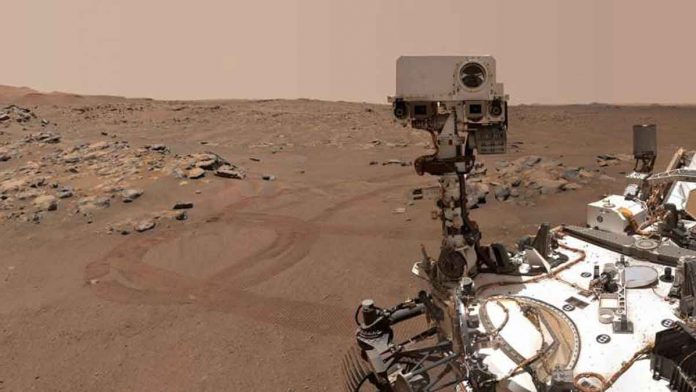Scientists on NASA’s Perseverance mission made an unexpected discovery about the composition of rock in Jezero Crater, which will help them understand when water existed on Mars and, ultimately, if the red planet was ever habitable to microbial life.
“The SuperCam instrument suite of remote chemical and mineralogical tools on the Perseverance rover has made some exciting new detailed observations about the history of Jezero Crater that could not have been fully understood before landing,” said Sam Clegg, deputy principal investigator for SuperCam. “This exciting new data will help us better understand when the crater held water, as well as provide insight into Mars’ climate history.”
The new study, published on August 25 in Science Advances, reveals that Jezero Crater is mostly composed of igneous rock rather than sedimentary rock.
Perseverance’s landing crater held water billions of years ago. As a result, scientists predicted that the rock in the area would be sedimentary, formed over time from settled mud, as is typical of lakebeds on Earth. To their surprise, they discovered that the rock in Jezero is igneous, meaning it was formed by volcanic magma.
Igneous rock is easier to date and may provide researchers with a more accurate estimate of when Mars had water.
SuperCam, a Los Alamos National Laboratory-designed instrument, was used to analyse the rock. In a technique known as laser-induced breakdown spectroscopy, SuperCam uses a focused infrared laser beam to remove dust and material from rock surfaces (LIBS). Each five-nanosecond pulse’s energy burst produces a flash, and its optical spectrum (specific colors) reveals the elemental chemistry of targets up to about 25 feet away.
“It was a surprise to discover these igneous rocks in the bed of an ancient lake on Mars. One would expect lakebed sediments, but it demonstrates that Mars’ history is more complicated than expected, with lava flows in this ancient site, for example “said Roger Wiens, the SuperCam instrument’s principal investigator.

